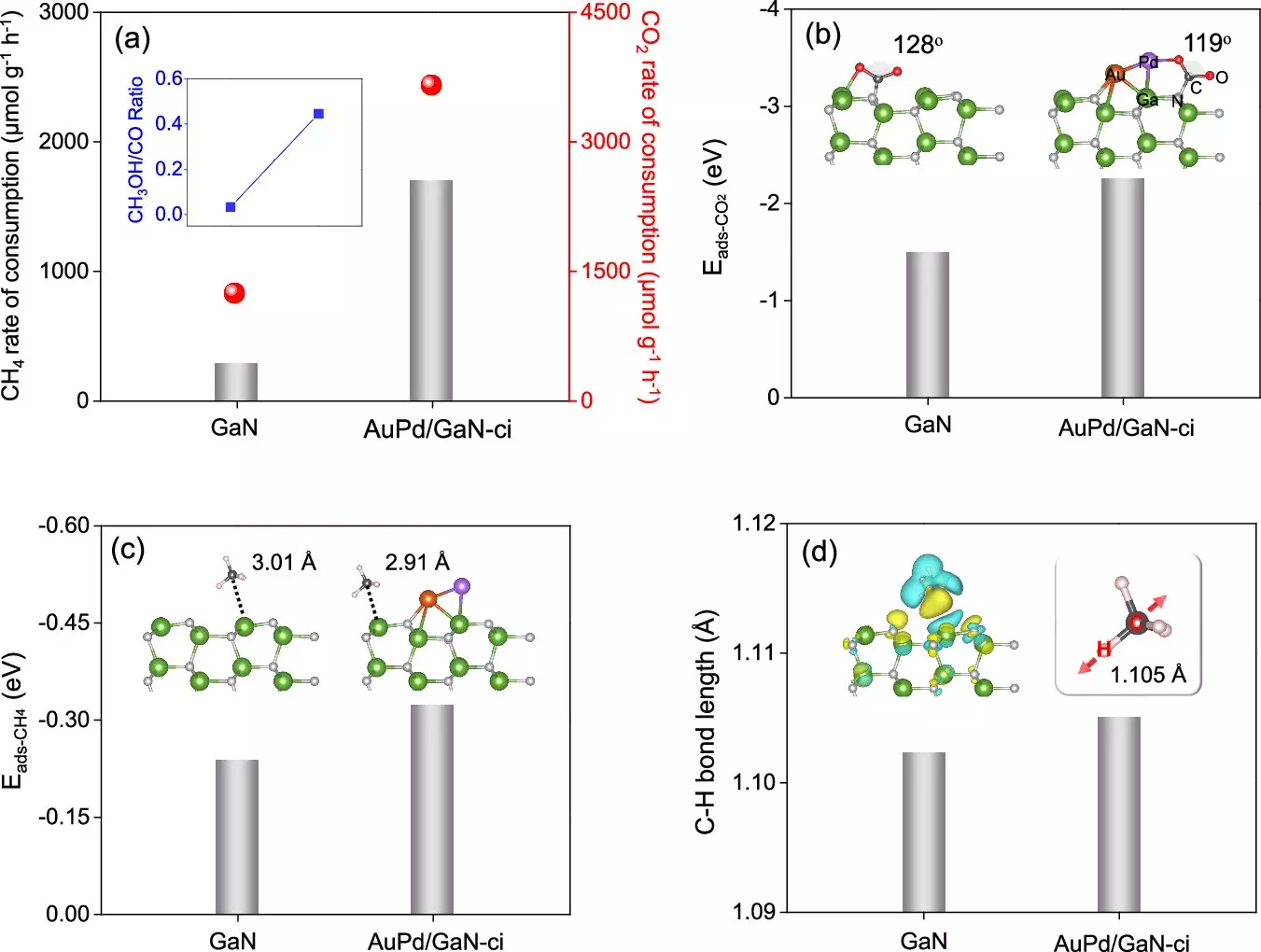As climate change continues to pose an existential threat, researchers from McGill University have turned to an unlikely ally in the fight against greenhouse gas emissions: sunlight. Their groundbreaking work sheds light on a revolutionary chemical process that can convert two notorious greenhouse gases—methane and carbon dioxide—into useful industrial chemicals like green methanol and carbon monoxide. This innovation not only addresses environmental concerns but also provides a potential pathway to sustainable production methods in the chemical industry.
At the heart of this study is a process that mimics photosynthesis, nature’s own method of converting light energy into chemical energy. The McGill team utilizes a unique catalyst composed of gold, palladium, and gallium nitride. When illuminated by sunlight, this catalyst prompts a reaction wherein an oxygen atom from carbon dioxide links with a methane molecule. The outcome is the generation of green methanol, alongside carbon monoxide as a byproduct. This approach circumvents the need for harsh chemicals and extreme heat, making it a significantly more sustainable method than conventional chemical processes.
The implications of this research are considerable. Green methanol and carbon monoxide are highly sought-after in various sectors, including energy and manufacturing. Green methanol can serve as a renewable fuel alternative, offering a cleaner energy source for vehicles, while carbon monoxide plays a critical role in producing various chemicals and materials. The ability to recycle greenhouse gases into such valuable products presents a dual benefit: it not only mitigates the harmful effects of climate change but also fuels economic growth within green industries.
Despite the potential advantages, several challenges remain before this innovation can be widely adopted. The scaling up of this chemical process for industrial applications has not yet been demonstrated, and further research is needed to optimize the efficiency of the catalysts used. Additionally, the fluctuating nature of solar energy poses a significant barrier to consistent application, pushing researchers to explore hybrid systems that can integrate traditional energy sources with solar-derived processes.
The researchers at McGill envision a world where turning harmful emissions into useful products becomes commonplace. Senior author Chao-Jun Li emphasizes the importance of this research in aligning with Canada’s goal of achieving net-zero emissions by 2050. As global temperatures rise and environmental degradation escalates, such innovative approaches could eventually revolutionize how industries address sustainability.
This research presents not just a technical achievement, but a hopeful narrative for the future. By reimagining waste such as methane and carbon dioxide into valuable resources, McGill’s work encapsulates the transformative potential of scientific innovation in the quest for a sustainable planet.


Leave a Reply